|
|
By Sandy, on April 10th, 2009
Ok! Here is a lesson that I have learned recently – Don’t try to save ourselves some work by planting our houseplant in a container too large, for we could damage or even kill our plants!
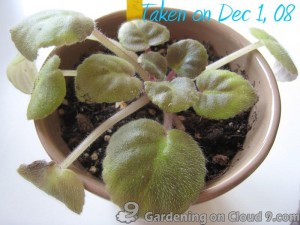 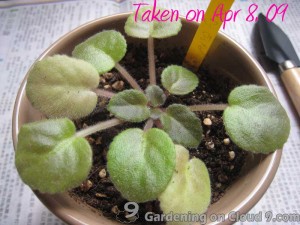
Continue reading My African Violet Doesn’t Like Its Big House
By Sandy, on April 6th, 2009
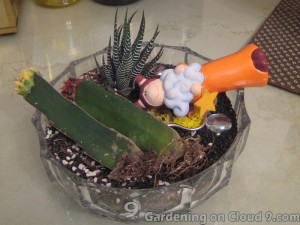 A few weeks ago, my father knocked down the two cacti in my tabletop garden – My Star when he was rushing to the windows to save the carpet and furniture from getting wet by a sudden rain. A few weeks ago, my father knocked down the two cacti in my tabletop garden – My Star when he was rushing to the windows to save the carpet and furniture from getting wet by a sudden rain.
Actually I should have anticipated this… After playing and observing this tabletop garden for a while, I have found its design deficiency – weak support. The red and yellow cacti were very tall, yet, lack of strong support. There were neither plants nor rocks to provide the cacti with enough support.
Continue reading My Star Got Crashed
By Sandy, on April 2nd, 2009
Compare to gardeners of the United States, gardeners in Canada seem to have an easier time in importing seeds from other countries. While Canada has its import regulations of seed to control and verify that seeds imported into Canada are free of prohibited noxious weeds and meet the minimum standards for purity and germination for the crop kind in question, these seed import regulations are relatively loose when comparing with those of the United States.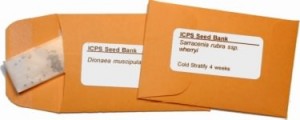
For shipping seeds into Canada, the importer must fill out the Import Declaration Form (CFIA/ACIA Form 4560), Continue reading Shipping Seeds to Canada
By Sandy, on March 27th, 2009
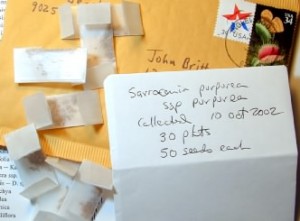 Since every country has its own set of import restrictions of seeds, swapping seeds around the world can be confusing and problematic. Here is a quick guide for swapping seeds that always stays true, no matter which country the seeds are imported into. Since every country has its own set of import restrictions of seeds, swapping seeds around the world can be confusing and problematic. Here is a quick guide for swapping seeds that always stays true, no matter which country the seeds are imported into.
Continue reading Quick Guide for Seed Swapping
By Sandy, on March 23rd, 2009
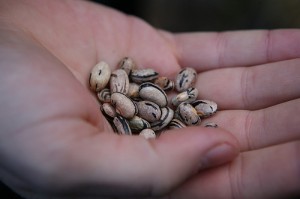 Many gardeners love sharing and exchanging seeds amongst fellow enthusiasts around the world. These gardeners often have an abundance of seeds in their gardens that they are willing to share with others. And by exchanging seeds, these gardeners can try something different, and grow some seeds that are difficult to find in their local areas. Many gardeners love sharing and exchanging seeds amongst fellow enthusiasts around the world. These gardeners often have an abundance of seeds in their gardens that they are willing to share with others. And by exchanging seeds, these gardeners can try something different, and grow some seeds that are difficult to find in their local areas.
Exchanging seeds often involves international shipments. Most countries have some import restrictions of seeds, and it is essential that the importers contact the plant health department of their countries to check what are allowed to be imported into their countries, Continue reading Seed Exchange & Import Regulations of Seeds
By Sandy, on March 21st, 2009
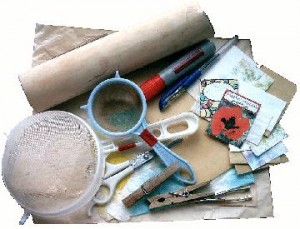 One person’s seeds are another person’s garden. In the gardening world, there are many communities of gardeners who are dedicated to sharing and exchanging seeds among fellow gardening enthusiasts around the world. One person’s seeds are another person’s garden. In the gardening world, there are many communities of gardeners who are dedicated to sharing and exchanging seeds among fellow gardening enthusiasts around the world.
I have never given much thought about the problems of shipping seeds internationally, but only until recently, when I have been asked to send a big bag of seeds (over 300 grams) to a friend in the USA. That’s the first time I started worrying about potential seizure by the US authorities.
And here is what I have found and would like to share.
Continue reading Shipping Seeds to US – Small Lots of Seed Permit
By Sandy, on March 17th, 2009
For the sake of watering, I have kept all my plants in my tabletop garden – Bento Box in individual pots. By doing so, instead of watering the plants in my tabletop garden together all at once, I can pick and water only those that I find are thirsty.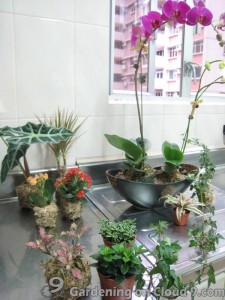
With individual pots, watering my tabletop garden – Bento Box becomes an easy task. Here is how I water my tabletop garden – Bento Box.
Continue reading How to Water Tabletop Garden – Bento Box
By Sandy, on March 11th, 2009
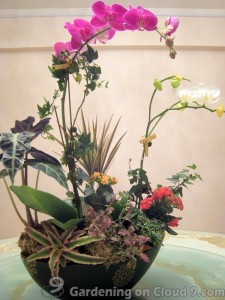 Because I want to use a wider variety of indoor plants that have different water needs for my tabletop garden – Bento Box, instead of planting all the plants into the same soil bed, I have kept them in individual pots. By doing so, instead of watering my plants together all at once, I can pick and water only those that I find are thirsty. And the same advantage applies to fertilizers. Because I want to use a wider variety of indoor plants that have different water needs for my tabletop garden – Bento Box, instead of planting all the plants into the same soil bed, I have kept them in individual pots. By doing so, instead of watering my plants together all at once, I can pick and water only those that I find are thirsty. And the same advantage applies to fertilizers.
So, with my garden container, my plants, pots, moss, etc, I was all ready to make my tabletop garden – Bento Box!
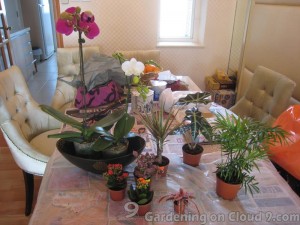
Continue reading How to Make Tabletop Garden – Bento Box
By Sandy, on March 9th, 2009
Garden Container
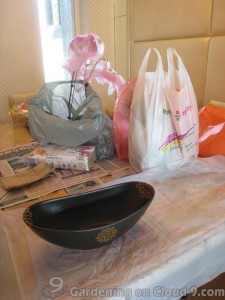 If you want to put more indoor plants in your tabletop garden, you need to use a bigger garden container with a wider opening. The size of my garden container is approximately 35 cm long, 15 cm wide (the widest part of the container), and 10 cm deep. And I would suggest you to use a garden container with some weight, so the container will not topple easily, but can keep its balance and stand stably when you are arranging the plants in the container. If you want to put more indoor plants in your tabletop garden, you need to use a bigger garden container with a wider opening. The size of my garden container is approximately 35 cm long, 15 cm wide (the widest part of the container), and 10 cm deep. And I would suggest you to use a garden container with some weight, so the container will not topple easily, but can keep its balance and stand stably when you are arranging the plants in the container.
Sizes of Indoor Plants
The number of indoor plants you get for your tabletop garden depends on the size of your garden container. Continue reading How to Choose Garden Container and Indoor Plants for Tabletop Garden – Bento Box?
By Sandy, on March 5th, 2009
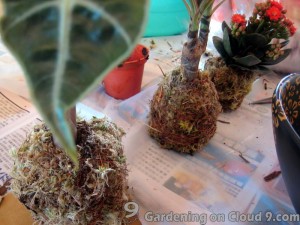 When we make our tabletop garden, due to different reasons, we may want to keep our plants in individual pots. And if some of these pots cannot be fully hidden inside the garden container, we will want to wrap and cover them with moss. And sometimes, with the limited space in our tabletop garden, we may want to take the plants out from their pots and wrap only the roots and soil with moss as well. In this way, the moss holds the roots and soil together, acting more or less like a container for the plants. When we make our tabletop garden, due to different reasons, we may want to keep our plants in individual pots. And if some of these pots cannot be fully hidden inside the garden container, we will want to wrap and cover them with moss. And sometimes, with the limited space in our tabletop garden, we may want to take the plants out from their pots and wrap only the roots and soil with moss as well. In this way, the moss holds the roots and soil together, acting more or less like a container for the plants.
Wrapping the pots or roots of a plant with moss is actually quite easy. I was actually quite surprised when I did it for the first time and found how easy it really was. I was like, “wow! That’s it?” So, believe me, it is probably easier than what you have thought.
Here is how to wrap pots or roots with moss.
Continue reading How to Wrap Pots or Roots with Moss
|
|
Recent Comments